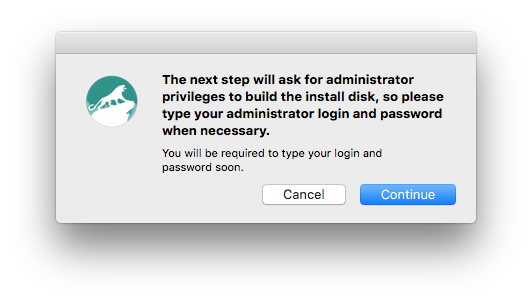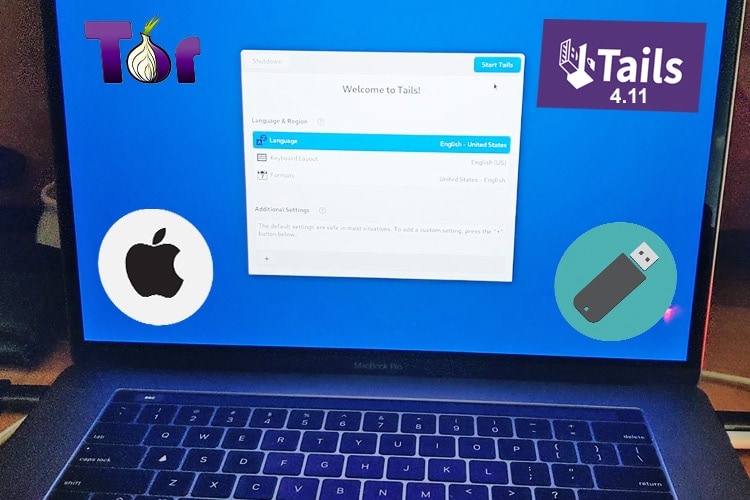Install Macos From Usb Stick
The other day when visiting my family, under a large pile of torn up binders and laminated documents, I found my sibling’s old 2013 MacBook Air. I thought it would be wasteful to just leave it there so I picked it up and took it to the lab, AKA home.
- This is so simple to install Macos from USB, you just need to create boot able usb flash drive and using windows computer and then complete installation.inst.
- How to Create a Bootable MAC OS USB Stick IN WINDOWS In this video How to Create Bootable macOS Catalina ISO & DMG file on a MAC? How to create Bootabl.
- With a bootable Ubuntu USB stick, you can: Install or upgrade Ubuntu, even on a Mac.
- Download: macOS Big Sur, macOS Catalina, macOS Mojave or macOS High Sierra These will be downloaded to your Applications folder as an app called Install macOS version name. If the installer opens after download, quit it without continuing the installation.
Plug the external drive into the Mac that you want to install the macOS on. Start up the Mac. If you have an Intel-powered Mac hold down the Option/Alt key while it is booting up. If it's an M1 Mac.
I discovered that the laptop was password locked with my sibling’s user and password. Since it must’ve been laying at my family’s house for a few years at least, and we as human’s have a tendency to forget our credentials, I decided to save the attempts and just format it and start with a clean OS.
Formatting and Reinstalling MacOS
- In the menu bar, choose Apple menu > Restart. As your Mac restarts, hold down the
Command + Rkeys until the macOS Utilities window appears. - Select Disk Utility, then click Continue.
- Select your startup disk on the left, then click Erase.
- Click the Format pop-up menu, choose Mac OS Extended format, enter a name, then click Erase.
- After the disk is erased, choose Disk Utility > Quit Disk Utility.
- Select Reinstall macOS, click Continue, then follow the onscreen instructions.
All of the steps ran smoothly and I had a working machine! The battery was still in really good shape as well, the screen was scratchless and the keyboard still had that bounce to it.
So I began downloading all the applications I usually use like Google Chrome, iTerm, Visual Studio Code. But when launching Google Chrome, I discovered that when navigating to GMail or Google Drive, I received an error message indicating that the applications do not support this browser and operating system.
I wasn’t buying it that the hardware would not be able to run the browser and applications and I had a strong belief that it’s some Apple-imposed limitation as part of the ‘Lightbulb Conspiracy.’ So I decided to pursue a different option: installing the latest Ubuntu on this 2013 MacBook Air to free the software restrictions of the machine manufacturer and unleash the power of the hardware.
I decided the best approach would be to initially dual boot MacOS and Ubuntu, ensure that Ubuntu is stable and then remove the partition where MacOS lives.
Create a Bootable Ubuntu USB Stick
The first step was to generate a bootable USB stick which would hold the Ubuntu image.
I logged into MacOS and downloaded the latest Ubuntu image from https://ubuntu.com/download/desktop and saved it in ~/Downloads/ubuntu-20.04.2.0-desktop-amd.iso.
I then opened the Terminal and ran the following command:

The command utilizes the MacOS hdutil tool to convert an image between two data types: .iso (disk image in ISO-9660 standard) to .img.dmg (disk image specifically by MacOS). The -format UDRW argument specifies that we want to read and write the image with the Apple UDIF format. To read more about the hdutil and UDIF format, I suggest reading the hdutil man page and disk image formats.
The command above created a new file in /tmp/ubuntu.img.dmg. But since we don’t want to run the MacOS installer (which is what the dmg image and extension do by default) in this case but want to create a bootable USB stick, we’ll need to convert the image from .img.dmg to .img:
At this point we can insert the USB stick which will likely be mounted by default to /dev/disk1.
Next, we need to unmounting the disk representing the USB stick, copying all files from the image to the unmounted disk using the dd binary and then ejecting the disk. We can perform all these steps using the MacOS diskutil binary within the Terminal:
We’re done with this step! We now have a USB stick containing the Ubuntu OS. We can eject it for now.
Macos Usb Devices
Next, we need to prepare some disk space on the hard disk where we intend to install Ubuntu.
Install Macos From Memory Stick
Creating a Partition
A partition is basically a separation of the hard disk into individual sections (also known as containers).
To be able to run both Ubuntu and MacOS on the same machine, we require to create a partition in the hard disk to hold both operating systems.
This step is rather straightforward with the use of the MacOS Disk Utility. We need to launch it, select the first disk we see on the left navver (called Macintosh HD in the image below):
Then click on Partition, choose the size of the disk you want to allocate to the partition where we’ll store Ubuntu, make sure the selected format is Mac OS Extended (Case-sensitive, Journaled) and click Apply. My hard disk size was 120GB so I allocated 80GB to Ubuntu and left the rest for MacOS.
Replacing MacOS Default Boot Manager
Let’s recap what we have done so far:
- We have a USB stick with Ubuntu loaded on it. We intend to use it to install Ubuntu.
- We have created space to hold Ubuntu when we decide to install it.
What would be the next logical step? We would need to tell the machine to let us decide which operating system we want to boot into. By default, the Apple bootloader will load MacOS. To change this behavior, we need to install a different boot manager. We need rEFInd Boot Manager to do this.

Download the binary from here and extract it:
Then reboot the machine and hold Command + R. This should bring you into Recovery Mode:
We need to run the rEFInd installation script. From the main menu bar, choose Utilities > Terminal and type the following command:
This will install the rEFInd boot manager. After it completes, shut down the machine, insert the USB stick we’ve prepared earlier and turn on the machine.
Launching and Installing Ubuntu
When we turn on the machine the next time, we will be greeted with the rEFInd Boot Manager:
Select Tux (the penguin, Linux mascot) and use the arrows to navigate to the Try Ubuntu without install option. Then press e which will expose a configuration file where we will make some changes. We will need to add the following commands between ‘splash‘ and ‘---‘:
This is because by default, the Radeon HDMI audio driver is disabled in the Linux kernel. After making this change, press F10 to save and exit.

After a minute or two, you should be the Ubuntu menu:
Click on Install Ubuntu, follow the installation wizard you should be set!
Addendum: Fixing Camera Detection
One of the applications I use most nowadays is Zoom so I was surprised when I joined a call and saw that my camera was not detected by Zoom. I also downloaded Cheese just to confirm sure that the issue wasn’t specific to Zoom. I saw the same greeting: ‘no device detected’.
I did some research and found that there was some firmware missing for the Facetime HD (Broadcom 1570) PCIe webcam which prevented the kernel from detecting the driver. I opened up the terminal and ran the following commands to get the driver to work (you will need git and curl installed):
Don’t worry too much about the SSL errors above, they are red herrings.
I then needed to load the drivers into the kernel:
I relaunched Cheese and saw my messy face on the camera 🙂
But once I restarted the computer, I saw that the changes were reverted. I needed to persist them somehow. After some more research, I found that I needed to add facetimehd to the kernel modules that are loaded during boot time:
After restarting, I saw that I was able to detect my camera in Zoom and Cheese!
